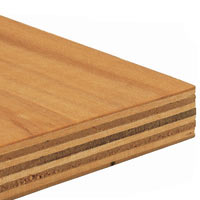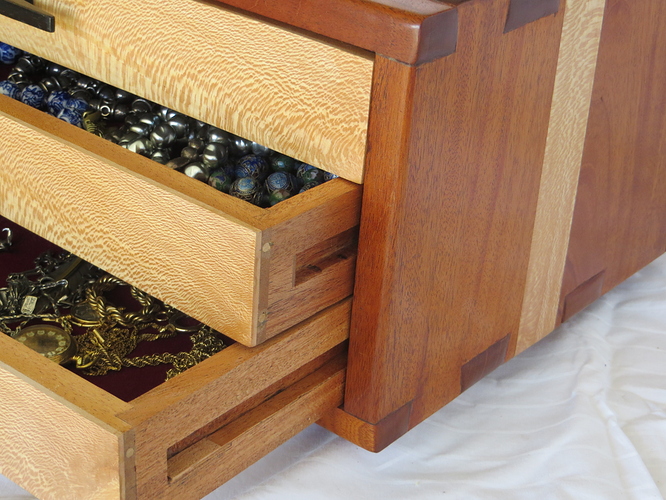Hi Ron.
I have usually do dovetails by hand but check out the post that Doug put up, he actually knows what he is talking about.
I did find an internet article with several good ideas which is copied below with credit.
In essence it says that there are four or five factors that go into successful plywood dovetails including.
Jig set up, backer board, a very sharp bit, and quite possibly the wood itself.
If you do not need the decorative aspect of a dovetail, you can use a dovetail bit to make an identical angled rabbet on the ends of the boards. This is a very simple joint that has enormous strength and can be made decorative using 1/8" dowels. Let me know if you need more info. Paul.
Dovetail Tearout using Baltic Birch Plywood?
 1/2’’ Baltic birch is an ever-popular choice of material for drawer boxes - including the dovetailed variety - and so is the question of how to prevent tearout when you cut the joints. Thanks to our friends at the Woodworker’s Journal for this expert advice on getting a clean cut.
1/2’’ Baltic birch is an ever-popular choice of material for drawer boxes - including the dovetailed variety - and so is the question of how to prevent tearout when you cut the joints. Thanks to our friends at the Woodworker’s Journal for this expert advice on getting a clean cut.
Q. “I need help about correctly dovetailing in Baltic birch plywood. I have seen beautifully clean cut dovetails for drawers and the like in contemporary furniture, so I know it can be done. I am experiencing a lot of tearout when I attempt it. I am using a Porter Cable Omnijig 24” with a 1 1/2 horse Porter Cable Router. I am using a 1/2" 12 degree dovetail bit, brand-new. Do I need a bit with a smaller angle? Do I need to score the plywood before each cut?" A. (Ellis Walentine) “This is puzzling. You ought to be able to get acceptable results if you use a new, carbide-tipped dovetail bit from a reliable manufacturer. The angle of the dovetail shouldn’t be an issue either. I suggest trying again with a newer or better cutter. If the problem persists, it could be the plywood itself. A cutter with a slight rake to the tip might improve your odds with flaky or difficult material.” A. (Rick White) “Whenever I do dovetails on plywood, I use a backer, i.e. a piece of wood attached to the piece you’re dovetailing so the bit can cut through and into the backer. This prevents a lot of tearout. The other option: do the cuts on a piece a bit wider than you need and trim off the torn out edges with a saw.” A. (Ian Kirby) "You don’t need to change the bit angle or score the plywood if everything is correct. Try the bit on solid wood and another type of plywood. If there is no tearout, then the birch plywood has a problem. If there is tear out, then it would appear that the bit has a problem. New or not, look at its edges very carefully; preferably through a hand lens for damage or incorrect machining. " A. (Rob Johnstone) “If your setup is true and the cutters are very sharp, then I would add the scoring step and see what happens. The idea of using plywood, even the voidless type you have selected, cuts against the grain (sorry about the pun) with me. I recommend a light colored but durable hardwood instead. It would support the contemporary look you are working for, while making the machining process much more manageable.” (From the Woodworker’s Journal eZine 2000 archives)
CREATE WITH


